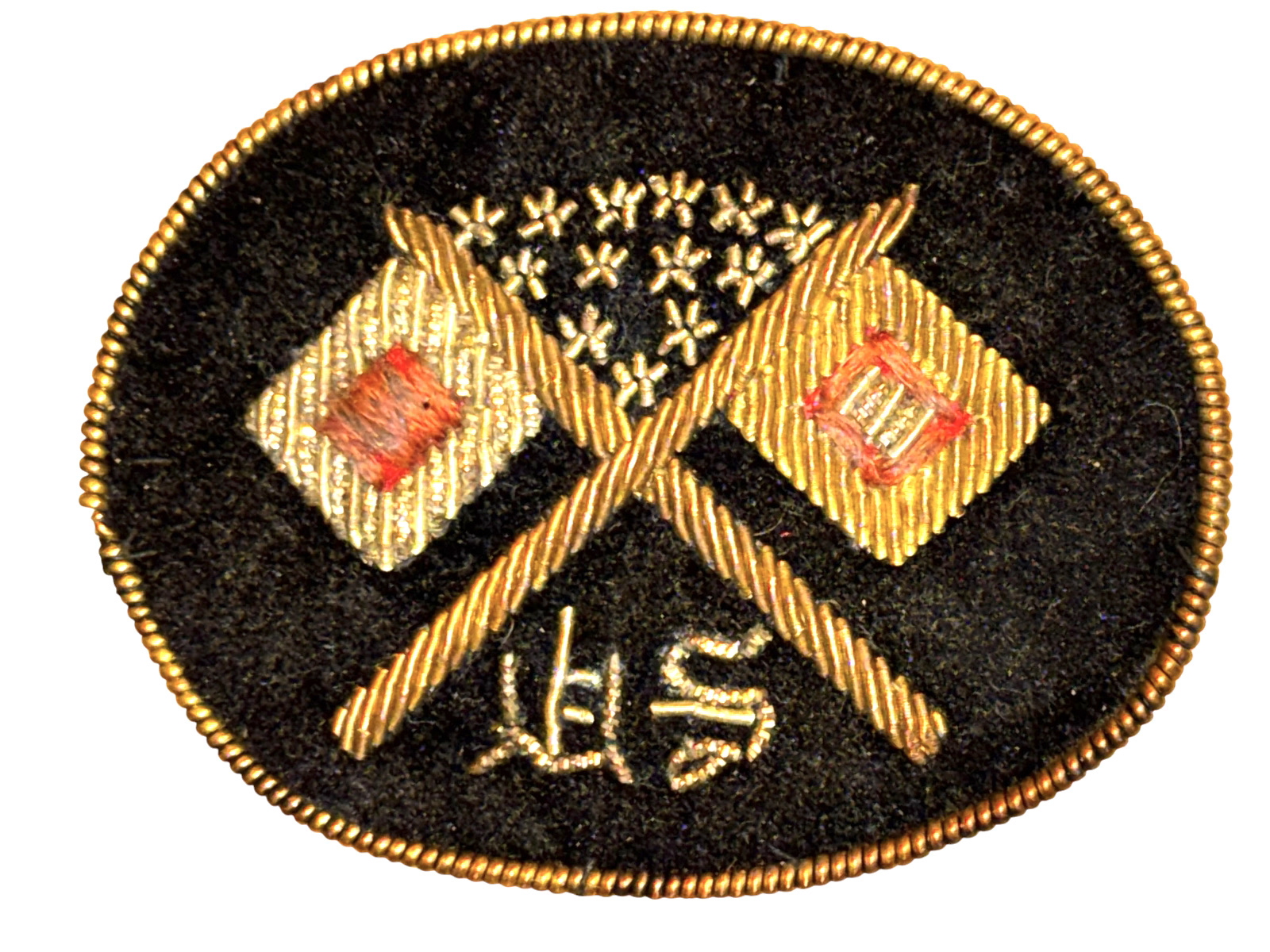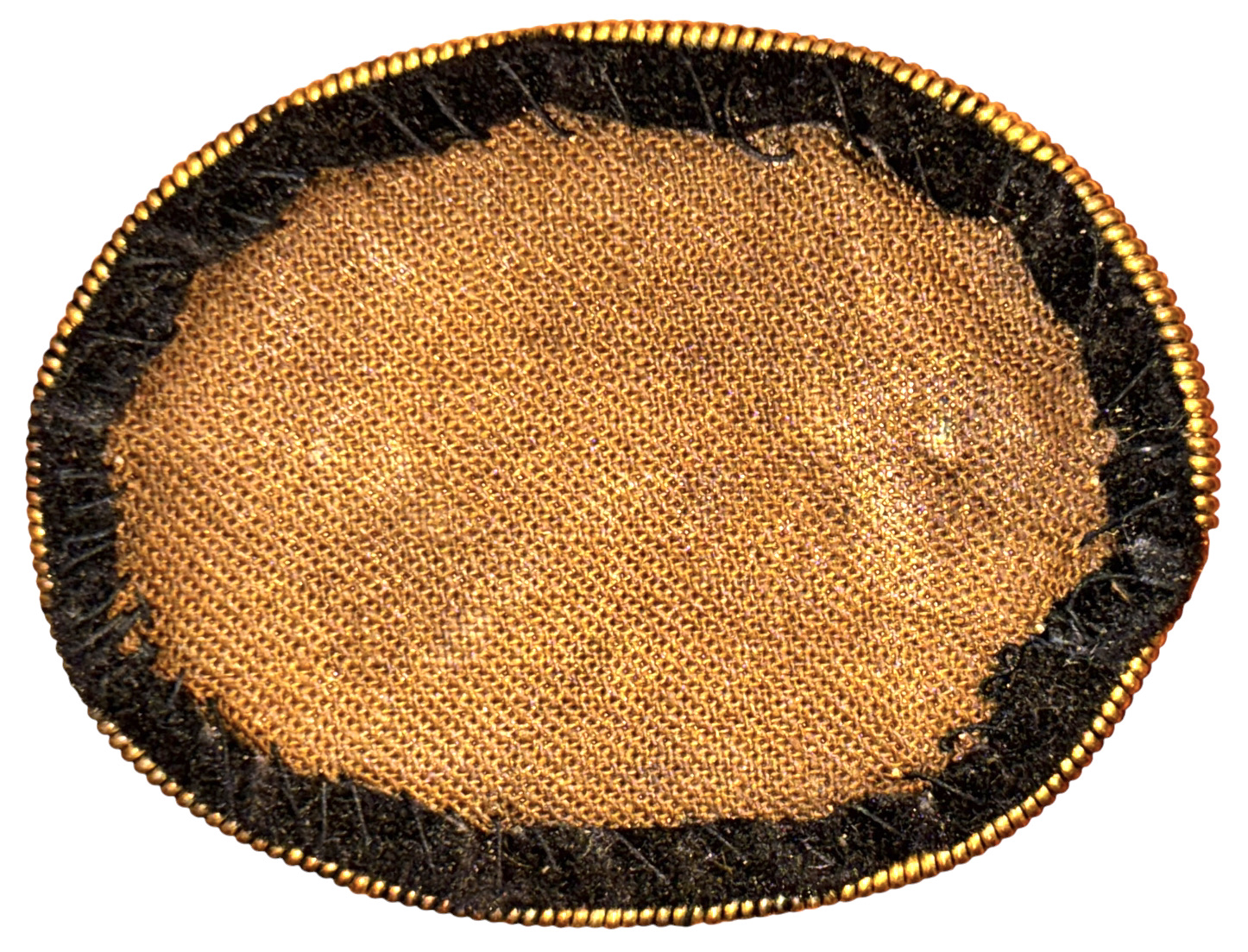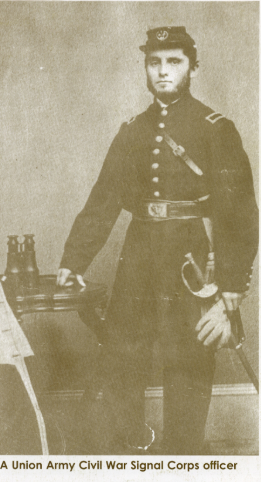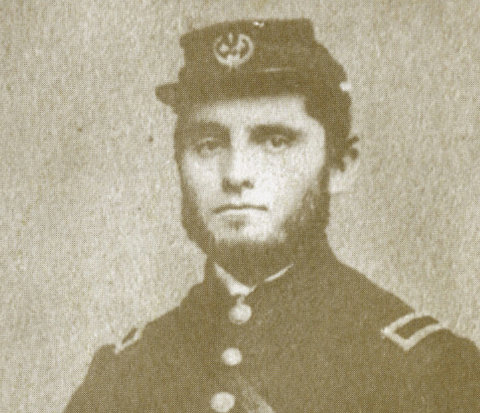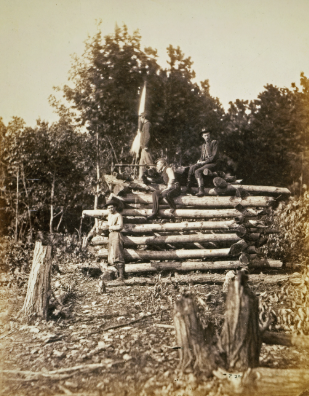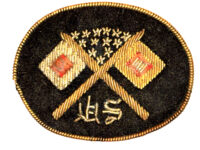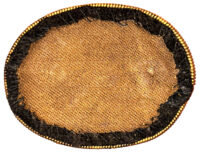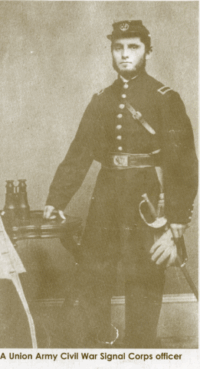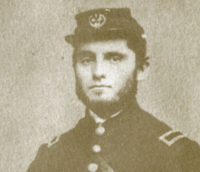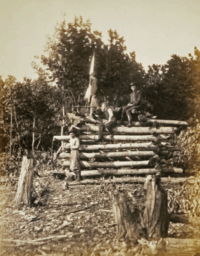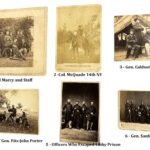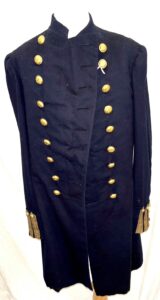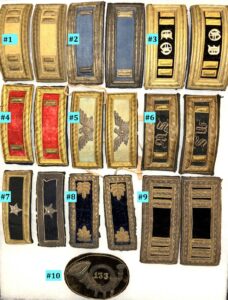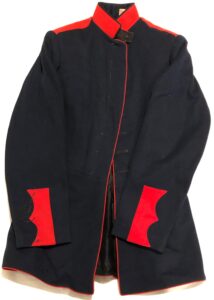Extremely Rare Civil War Signal Corps Officer’s Hat Badge
$3,950
Extremely Rare Civil War Signal Corps Officer’s Hat Badge – Initially established in 1860, just prior to the onset of the Civil War, the signal corps, first entitled the Signal Service, encompassed only one officer. By March, 1863, the U.S. Congress dictated the expansion of the Signal Service into the Signal Corps. Insignia, as dictated by the U.S. Regulations of 1864, mandated that enlisted men in the Signal Corps wear patches of crossed signal flags on the upper arms of their jackets; Signal Corps officers were required to wear patches on their caps that depicted crossed signal flags with a torch at the intersection of the flags, over a diminutive silver wire, Old English “US”; period photographs depict signal officer cap badges like this example where the torch has been replaced with silver stars, with the silver wire “US” below the crossed signal flags.
This rare example of a war period, Signal Corps officer’s hat badge has the regulation, embroidered, crossed signal flags, with thirteen silver stars above the intersection of the flags; beneath the crossed flags is the silver wire “US”. As dictated by the 1864 Army Regulations the flag staffs of each signal flag are constructed of gold bullion, with the right flag of gold bullion with a central, embroidered, red square with a white or silver center; the left flag is edged in silver bullion, with a central red embroidered square. The thirteen stars are constructed of silver bullion. All of the latter ornamentation is stitched on a black velvet field. The reverse side backing of the badge is made of brown cotton. The entire, oval badge is edged with gold bullion wire.
The badge remains in excellent condition, with strong color and great fabric and bullion integrity.
Measurements: Horizontal Width – 2.5”; Height – 1.75”
U.S. Army Center of Military History
In 1856, Assistant Surgeon (Captain) Albert J. Myer, a medical officer stationed in Texas, proposed that the Army adopt the visual communications system he developed and named “aerial telegraphy,” but more commonly called “Wigwag.” After successful demonstration and application, the Army approved Meyer’s proposal on 21 June 1860 and named him the first – and only – signal officer, with the grade of major.
Meyer was ordered to recruit and train personnel from within the Army, who were then detailed to the Signal Corps, and gave him a modest budget for the procurement of equipment. While Meyer had recommended the establishment of a separate, trained professional military service, the Signal Corps did not constitute an official organization until 3 March 1863, along with Meyers’ promotion to the rank of colonel. By the end of the Civil War, approximately 2,900 officers and men had served in the Signal Corps.
